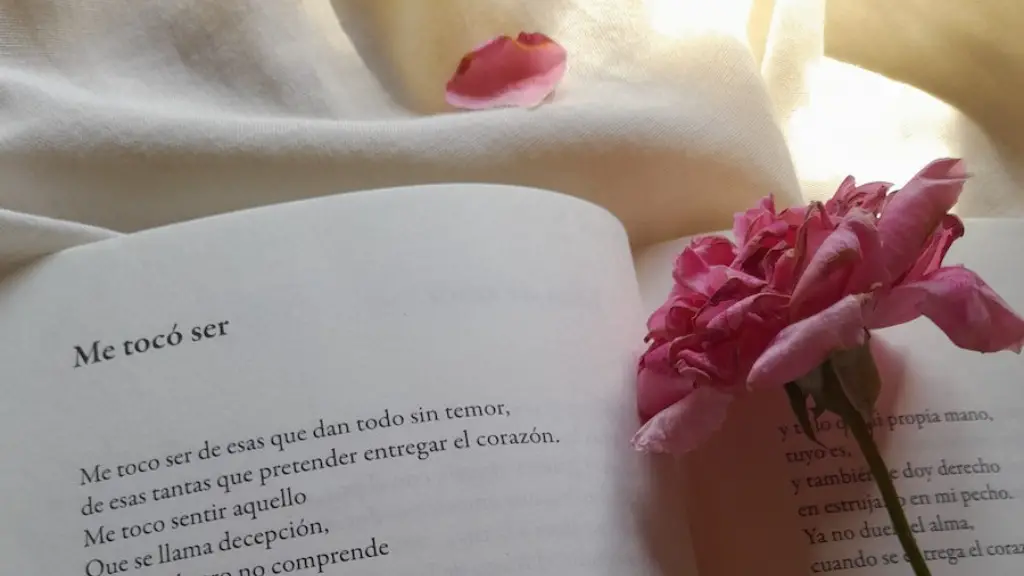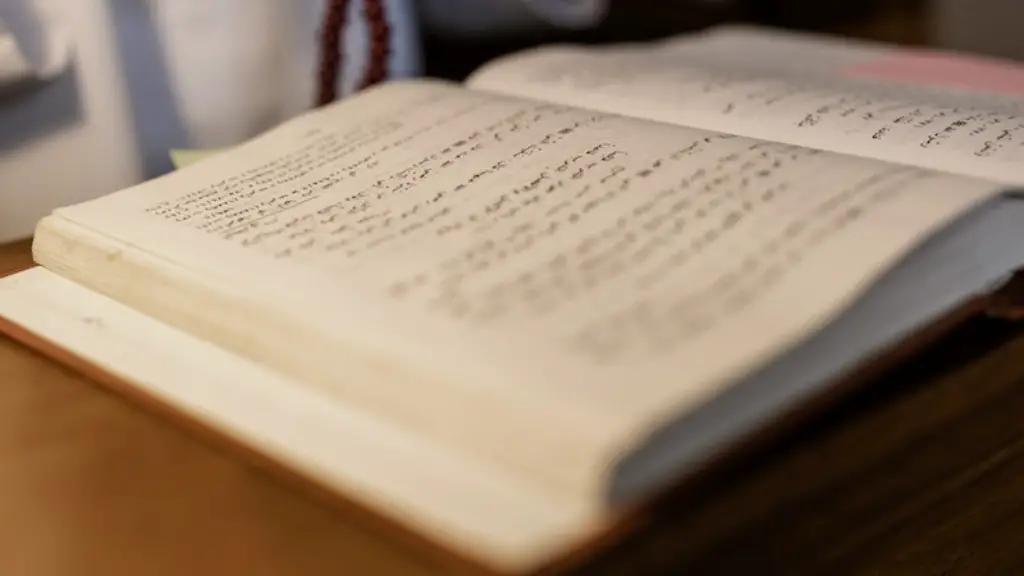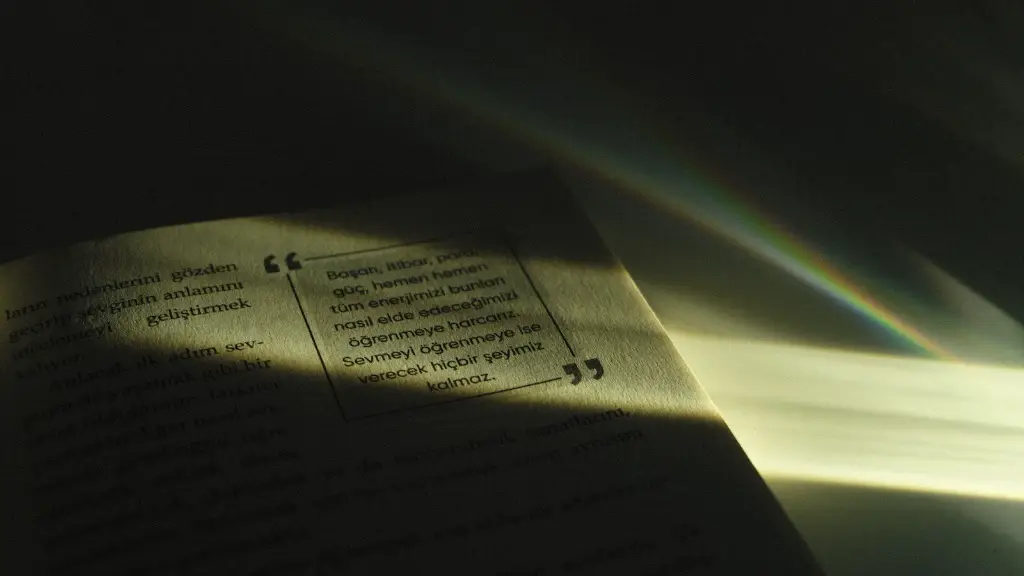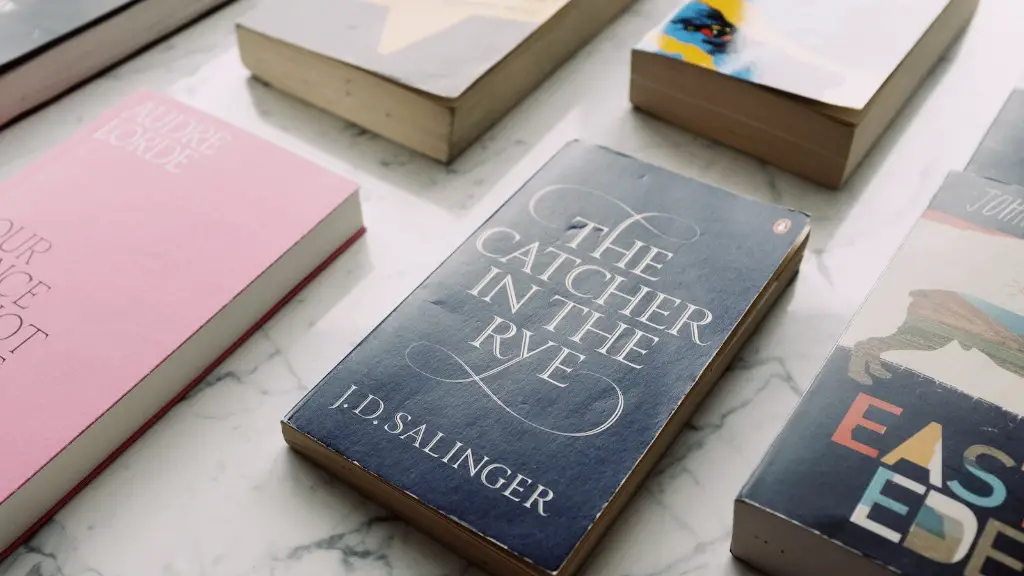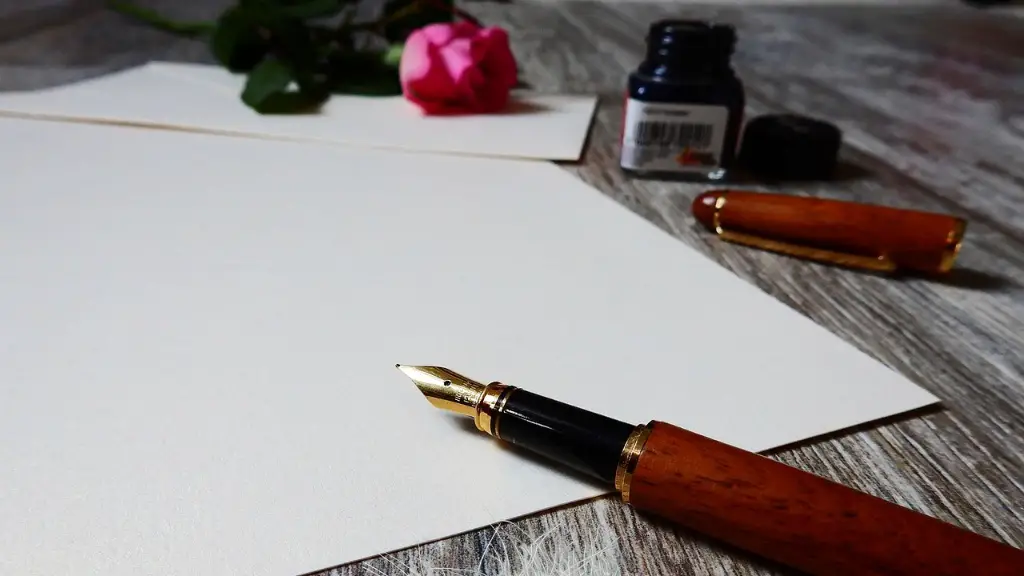How To Mark Meter In Poetry
Meter in poetry is a powerful tool that contributes to the musicality of the words, helping to evoke mood and deliver emotion in a unique and powerful way. But to fully appreciate the beauty of poetry requires more than just an understanding of its metrical structure – it requires an appreciation of how meter adds to the impact of the words.
Meter in poetry is the pattern of stressed and unstressed syllables throughout the poem. Each line of verse has a number of syllables in it and the pattern of stressed syllables contributes to the meter. Certain styles of poetry, such as Iambic Pentameter, or Yeats’s ‘limerick’ meter, have a regular and consistent rhythm. Other types of poetry, such as free verse and blank verse, may not have a consistent meter but they can still use meter to create a particular effect or emotion.
To mark meter in a poem, first identify the type of meter. Traditional metrical forms have names such as Iambic Pentameter and English Ballad Meter. These can be identified by counting the number of stressed syllables in each line and seeing if there is a consistent pattern. The pattern may be regular, like Iambic Pentameter, or irregular, like English Ballad Meter. Once the meter has been identified, mark the stressed and unstressed syllables in each line of the poem.
When marking meter, it is also important to think about how these stressed and unstressed syllables contribute to the overall effect of the poem. For example, strong, regular meters often create a sense of anticipation or urgency, while long, drawn-out syllables can give the reader a feeling of peace and tranquility. By studying the meter of a poem, readers can gain insight into how the poet creates meaning and emotion in their work.
Finally, when marking meter, be aware of the context of the poem. In some cases, a line may be scanned differently depending on how it is read or interpreted. For example, lines that are intended to be read as a couplet may require a different meter than if they were read separately. Knowing the context of the work is essential for understanding the meter and its effect on the poem.
Exploring the Elements of Poetry
With the mechanics of meter firmly understood, the next step towards mastery lies in exploring the elements of poetry. There are many key ingredients to what makes a poem great; from the importance of imagery to the success of rhyme. Below, we will consider each of these in turn and answer the question, what does it really mean to ‘sculpt’ a poem?
Imagery refers to how a poet uses words to construct a vivid and evocative mental picture or physical sensation. An effective use of imagery allows readers to equally experience the sights, smells, feelings and emotions described. A great poem can instantly take the reader to a place they are familiar with or to a place they’ve never been, allowing them to explore without limitation. The more intricate the imagery employed by the writer, the more immersive the experience of the poem will be for the reader.
Rhythm within poetry works in conjunction with meter and further helps the poem along. It is largely the capacity of rhythm to bring attention to itself that makes it so integral to poetry. Poetic language inevitably gets heightened, slows or speeds up, or gets broken into a new syntax; these techniques all serve to interact with the poem’s meter and add to its impact. By focusing on the rhythmic element, the reader can understand the emotionality of the text.
Rhyme is another way to add musicality to a poem. The selection of the right words can result in a sort of melody and is often used to bring add an additional layer of lasting impact on the poem. A powerful tool in the poet’s arsenal, rhyme has been used for thousands of years to emphasize and add to the beauty of the poem being read. It is also well known for its role in passing on stories and traditional tales in what is often referred to as rhyming couplets.
Significance and Impact
Going deeper, we can explore the significance of meter and its emotional impact. Poetry is an art form and although the technique of meter can be quantified and measured, what each individual reader takes from a poem remains unique and highly subjective. Further still, the meter of a poem can also be shaped by changes in cultural expectations of what a poem should sound like over time. As there are no ‘correct’ answers, the meter of a poem can be tailored to each reader and their individual understanding of a text.
Moreover, the significance of meter goes far deeper thanmerely making the poem sound nice. When used correctly, meter can set the tone of the entire poem and further help the reader to draw out the themes and motifs within. Consider, for example, the most common type of poetry, iambic pentameter. This meter consists of five pairs of syllables, with each pair having one stressed syllable and one unstressed syllable – and this regular pattern, when read out loud, has been known to evoke a feeling of calm and composure.
Consequently, it is possible for meter, along with imagery and rhythm, to be used to great effect in order to create emotion in a poem. To take a simple example, in Shakespeare’s famous line in Romeo and Juliet, ‘For never was a story of more woe’ the meter creates the perfect backdrop for expressing the sorrow and despair of the scene. By juxtaposing the two opposing concepts of a story and its sorrow, the reader is immediately drawn in and can feel the power of a master poet at work.
Archetypes and Clichés
When it comes to the writing of poetry, meter is an integral part of the process. First and foremost, poetry is a form of story-telling and this can be seen throughout many traditional poetic forms, such as the sonnet or the ode. Every story or poem should keep the reader engaged, and in order to do this, a poet must avoid the use of archetypes and clichés. Archetypes are overly simplistic characters that have been overused and rarely have realistic behavior or motives. By using archetypes, a poet is unable to express their own unique sense of style and storytelling, resulting in a poem that can easily lose the interest of its reader.
The use of clichés is also an obstacle to creating original poems. These have been used so often that their impact is drastically reduced, meaning that if a poet includes them in their work, it is unlikely to be inspiring or impressive. By bringing in their own unique voice, however, it is possible for poets to move away from traditional conventions and write something truly memorable.
Ultimately, there is no definitive answer when it comes to poem construction. However, the technique of meter provides a valuable tool in a poet’s arsenal. With an understanding of the elements of poetry mentioned above, a poet can apply the effects of rhythm, imagery, and rhyme in order to create a poem that is powerful, emotive, and most importantly, that resonates with the reader.
Forms of Poetry
As the reader will now know, meter is a crucial tool to great poetry writing. Armed with this knowledge, the poet is now more than capable of making an informed decision about the form of poetry they are seeking to write. As previously mentioned, there are many poetic forms, from the sonnet to the limerick, each with its own conventions. To break these down, the sonnet is characterised by a conversion of two quatrains and two tercets, with a single line at the end. Meanwhile, the limerick is a humorous form, often composed of five lines, with the last two traditionally rhyming together.
More broadly, Meter is an essential part of many aesthetic pieces, from ancient Greek epic poetry, to modern-day rap. For example, some famous rap is written in Iambic Pentameter, and so it is that melodic form which is integral to its success. Therefore, when writing a piece, it is vital for the poet to understand the different types and styles of meter that exist in order to convey the desired emotion and achieve the desired effect.
Studying the distinct characteristics of meter requires a certain level of commitment, however, this effort will be rewarded. Through firsthand experience, the poet will come to realise the endless possibilities which the metric tradition offers. The application of variations of meter offers new textures, angles, and perspectives often leading to moments of poetic license, which, done right, will transform mundane texts into works of art.
The Power of Voice
The final result of any poem is the piece of art itself. A poem is nothing without a reader, however. It is the reader’s interpretation and feeling which will determine how good a poem is in their eye. This is where the power of voice comes in. Through reciting a poem, the reader can bring different life and emotion to a poem, even if written by someone else. There is an almost magical power in words and when recited, their energy is heightened and the full effect of the poem can be felt by those around.
Reciting poetry also allows the reader to access certain qualities that words alone cannot give. When a poem is read aloud, the reader is able to entertain the audience, engage their senses in a new way, as well as comprehend the merits of the poem at a much deeper level. Speaking clearly, delivering the words piece by piece and emphasizing the right syllables allow a poem to retain its essence and give the reader a better insight into the writer’s intentions.
Through reciting poetry, thanks to meter, one can transport the listener to the world of the poet, share the beauty of the poem they are reciting, explore the intricate language and rhetoric, and experience the emotions of the writer. Meter and its signature cadence can become the foundation of each poem, and when used by experienced orators, its potential as a powerful poetic tool is unlimited.
Reinterpreting Poetry
In conclusion, understanding meter is crucial for appreciating the beauty of poetry. This does not mean that every poem must adhere to certain metrical rules, only that studying the meter of a poem can help the reader to gain insight into the poet’s intentions and appreciate the impact of the poem. Through considering the symbolism, rhythm and rhyme, the reader can enter the world of the poem and truly appreciate the power of poetic language.
Beyond reading and reciting poetry, the practice of actually writing it can help unlock even more profound powers. Through experimentation with meter, a poet has the ability to reinterpret the work of past generations or create a brand new piece of art which contains elements of its own. With the right combination of language, phrasing and image, poets can take inspiration from any text they find – be it traditional or modern – and the results can be astonishing.
Meter is an essential part of every poem and provides structure, form and style. Understanding the nature of meter is an invaluable tool which all poets can benefit from, when applied correctly, it has the power to unlock vast possibilities.
